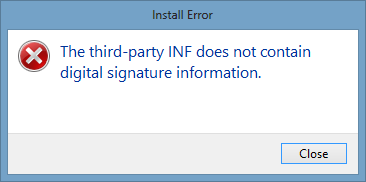LibUsb backends using pyinstaller and appveyor
With a development machine all set up for communicating in python with pyusb and libusb on Windows 10. The signed drivers are available, the device is communicating on the build machine. Building the installer on the development machine also is successful. Redistributing the installer built on the development machine delivers …
SVG icons in PySide on Windows 7
Your application icons look great. They are saved in .svg format, loaded into Qt Designer, and distributed with pyinstaller as resource files.
Except on windows 7.
No error messages, no crashes, no information on why the icons are missing.
The issue is the included qsvg4.dll distributed with the application …
Pyinstaller and filenames requiring .py extensions, on appveyor
With a code base that builds with pyinstaller on a Windows 10 Home system, and on appveyor. For example:
Run a pyinstaller script like:
pyinstaller
--distpath=scripts/built-dist
--workpath=scripts/work-path
--noconfirm
--clean
--icon dash/assets/uic_qrc/images/DashIcon.ico
--specpath scripts
scripts/Dash.py
On Windows 10 …
Long term testing of windows software in virtualbox
Requirements: Ensure that the software is stable.
Specifically, run the software for weeks, verify that the RAM, CPU and disk usage behaves predictably. Ensure there are no crashes. Prevent windows from invalidating the process by rebooting due to windows updates.
The steps below were followed for creating multiple machines running …
Gource visualizations of source code repositories
gource creates truly outstanding source code development visualizations. Here's the workflow for demonstrating the collaboration over years, without some of the default details. The commands below are designed to produce the visualizations to show collaboration and general activity levels, as well as produce animated gifs and smaller sets of imagery …
Signing Drivers - Windows 10 and Cypress FX2/FX3 USB
2016-09-14 16:53 signed windows 10 drivers:
The best resource for this process is clearly David Graysons Practical Windows Code and Driver Signing
Here are the refined points in that article for aparticular use case: Windows 7 and greater. Installing a driver package without loading a kernel module.
-
Go to …
Work log - Recording of software work at Wasatch Photonics
MicroAngio - Demonstration interface for the MicroAngio UX project.
Clickable, navigatable demonstration of the new user experience design for OCT Angiography. No actual OCT processing is included. See the screenshots below for more detail. One of the primary goals of this system was to create a 'live' demo for faster iteration of design concepts. This demo was based on …
BoardTester - collect data with automated hardware power cycling
Use the techniques from Phidgeter and the Barbecue in an automated fashion. Perform thousands of power cycle events, and isolate issues with various software configurations and power requirements.
This tool is used at Wasatch for analysis of various hardware configurations on Optical Coherence Tomography systems.
Available on GitHub






